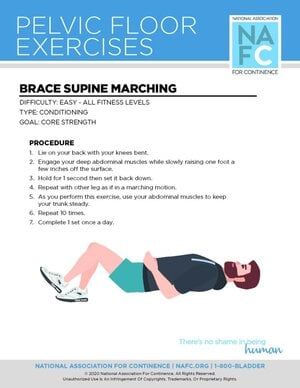Addressing urinary incontinence through pelvic floor exercises

Urinary incontinence is a common condition that affects millions of people, particularly women, around the world. The loss of bladder control can lead to embarrassing situations and impact one’s quality of life. However, there is hope for those suffering from this condition through the practice of pelvic floor exercises.
Understanding Urinary Incontinence
Urinary incontinence refers to the involuntary leakage of urine. It can occur due to various factors, such as weak pelvic floor muscles, hormonal changes, pregnancy and childbirth, aging, prostate issues in men, and certain medical conditions. The severity of urinary incontinence ranges from occasional leaks to a complete loss of bladder control.
The Role of Pelvic Floor Muscles
Pelvic floor muscles play a crucial role in bladder control. These muscles support the pelvic organs, including the bladder, uterus, and rectum. When these muscles become weak or damaged, urinary incontinence may develop.
What Are Pelvic Floor Exercises?
Pelvic floor exercises, also known as Kegel exercises, aim to strengthen and tone the pelvic floor muscles. They involve contracting and relaxing the muscles that control urine flow. Regularly performing these exercises can help improve bladder control and reduce the symptoms of urinary incontinence.
How to Perform Pelvic Floor Exercises
The following steps outline the process of performing pelvic floor exercises effectively:
Identify the correct muscles: To locate the correct muscles, imagine stopping the flow of urine midstream. The muscles used to achieve this are the ones targeted in pelvic floor exercises.
Find a comfortable position: It is important to be in a comfortable position, whether sitting, lying down, or standing, to perform the exercises.
Contract the pelvic floor muscles: Squeeze the pelvic floor muscles for a few seconds, without holding your breath or tightening the abdomen, buttocks, or thigh muscles.
Release and relax: Relax the muscles for an equal duration after each contraction.
Repeat and stay consistent: Aim for at least three sets of ten repetitions per day and gradually increase the duration and intensity of each squeeze over time.
It is important to note that pelvic floor exercises are most effective when done regularly and consistently over an extended period. Patience and persistence are key to seeing positive results.
The Benefits of Pelvic Floor Exercises
Pelvic floor exercises offer several benefits for individuals experiencing urinary incontinence:
Improved bladder control: Strengthening the pelvic floor muscles helps enhance bladder control, reducing the frequency and severity of urinary leaks.
Prevention of worsening symptoms: Regular exercises can prevent urinary incontinence from worsening over time.
Enhanced postpartum recovery: For women who have given birth, pelvic floor exercises aid in the recovery of the pelvic floor muscles, which can weaken during pregnancy and childbirth.
Increased confidence and quality of life: Gaining control over bladder function leads to increased self-confidence and improved overall quality of life.
Consulting a Healthcare Professional
While pelvic floor exercises are generally safe for most people, it is advisable to consult a healthcare professional, such as a urologist, gynecologist, or physical therapist specializing in pelvic floor rehabilitation. They can provide personalized guidance, evaluate your condition, and recommend exercises tailored to your specific needs.
Incorporating Pelvic Floor Exercises into Daily Routine
Integrating pelvic floor exercises into your daily routine can be easily accomplished by following these tips:
Set reminders: Use alarms or notifications on your phone or computer to remind yourself to perform your exercises regularly.
Combine with other activities: Perform pelvic floor exercises while doing everyday tasks, such as watching TV, reading, or waiting in line.
Keep a progress journal: Track your exercises and progress in a journal to stay motivated and monitor your improvement over time.
Take advantage of available resources: Utilize smartphone apps or online videos that provide guided instruction and reminders for pelvic floor exercises.
In Conclusion
Pelvic floor exercises are a simple yet powerful tool for addressing urinary incontinence and regaining control over bladder function. By diligently practicing these exercises, individuals can alleviate symptoms, enhance their quality of life, and regain confidence. However, it is important to seek advice from a healthcare professional for an accurate diagnosis and personalized exercise plan. With commitment and patience, individuals can effectively address urinary incontinence and embrace a life free from the burdens it may bring.






